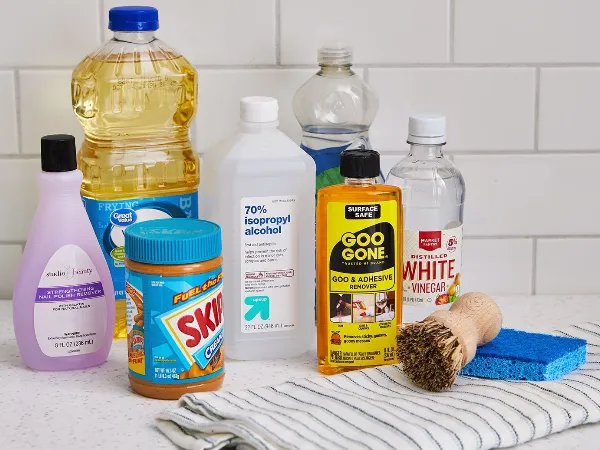Carpet cleaning is an essential task that helps maintain the cleanliness and hygiene of our homes or commercial spaces. Regular cleaning not only improves the appearance of carpets but also eliminates dirt, dust, allergens, and other contaminants that can affect indoor air quality. One common question that arises during carpet cleaning is whether the process should continue until the water used in cleaning becomes clear. Let’s delve deeper into this topic “Do You Keep Cleaning Carpet Until Water Is Clear?” and explore the factors involved.
Understanding the Carpet Cleaning Process
Before we address the question at hand, it’s crucial to understand the carpet cleaning process. Cleaning carpets typically involves several steps, including vacuuming, pre-treatment, spot treatment, extraction, and drying. Each step plays a vital role in achieving a clean and fresh carpet.
The Role of Water in Carpet Cleaning
Water is a fundamental element in carpet cleaning. It serves as a carrier for cleaning agents, helps break down stains and dirt, and aids in their removal during extraction. The color of the water used in the cleaning process can provide some insights into the effectiveness of the cleaning, but it is not the sole determinant of a clean carpet.

Factors Affecting Water Color During Carpet Cleaning
Several factors influence the color of the water during carpet cleaning. These include the type and severity of stains, the presence of deep-seated dirt, the cleaning method used, and the quality of the carpet itself. It’s important to consider these factors to accurately assess the cleanliness of the carpet.
Initial Cleaning vs. Deep Cleaning: Key Differences
Initial cleaning, often done during routine maintenance, focuses on removing surface-level dirt and stains. Deep cleaning, on the other hand, aims to eliminate embedded dirt, allergens, and tough stains by using specialized equipment and techniques. Deep cleaning can result in more noticeable color changes in the water due to the extraction of deeply rooted contaminants.
Is Clear Water an Indicator of a Clean Carpet?
The clarity of water used in carpet cleaning is not necessarily an accurate indicator of a clean carpet. While clear water may suggest a cleaner surface, it doesn’t guarantee the removal of all dirt and stains. Cleaning agents and extraction methods play a crucial role in achieving a truly clean and fresh carpet.
Types of Carpet Stains and their Impact on Water Color
Different types of stains, such as food, pet stains, or oil-based stains, can have varying impacts on water color during cleaning. Some stains may dissolve more easily, resulting in clearer water, while others may require additional treatment and multiple cleaning cycles.

The Significance of Pre-Treatment in Carpet Cleaning
Pre-treatment involves applying specific cleaning agents to stains or heavily soiled areas before the actual cleaning process begins. This step helps break down the stains, making them easier to remove. Pre-treatment can significantly impact the water color during cleaning, especially when dealing with stubborn stains.
The Role of Cleaning Agents in Water Color Change
Cleaning agents, such as detergents or solvents, are commonly used to assist in the removal of dirt and stains from carpets. These agents can alter the color of the water used in the cleaning process. The water may appear murky or colored due to the suspended particles or dye remnants from the cleaning agents.
Over-Wetting: Potential Risks and Prevention Measures
Over-wetting occurs when excessive moisture is introduced into the carpet during cleaning. This can lead to longer drying times, mold or mildew growth, and potential damage to the carpet fibers. Proper extraction techniques and appropriate drying methods are essential in preventing over-wetting and ensuring the best cleaning results.
Extraction Methods: Impact on Water Clarity
The extraction method used during carpet cleaning plays a significant role in water clarity. Different extraction methods, such as hot water extraction or dry extraction, have varying degrees of effectiveness in removing dirt, stains, and cleaning residues. The efficiency of the extraction method can influence the color of the water during cleaning.

Drying Techniques: Ensuring a Thoroughly Cleaned Carpet
Proper drying is crucial to ensure a thoroughly cleaned carpet. Effective drying techniques, such as the use of air movers or dehumidifiers, aid in removing excess moisture and preventing the growth of mold or mildew. Thorough drying also helps restore the carpet’s appearance and texture.
Professional Carpet Cleaning vs. DIY Approaches
Choosing between professional carpet cleaning services and DIY approaches is a common consideration. While DIY cleaning can be cost-effective, professional cleaners have the expertise, specialized equipment, and industry knowledge to deliver superior results. Professional cleaning can ensure a deeper clean and help maintain the longevity of your carpet.
Tips for Maintaining a Clean and Healthy Carpet
Regular maintenance is key to keeping your carpet clean and healthy. Vacuuming regularly, addressing spills promptly, using doormats to reduce dirt ingress, and scheduling periodic professional cleanings are all effective ways to maintain a clean and fresh carpet.
Conclusion: Striving for Cleanliness and Longevity
While the clarity of water used in carpet cleaning can provide some insight into the cleaning process, it is not the sole determinant of a clean carpet. Factors such as the type of stains, cleaning agents, extraction methods, and drying techniques all contribute to the overall cleanliness and freshness of the carpet. By understanding these factors and adopting proper cleaning practices, you can strive for both cleanliness and longevity in your carpets.





